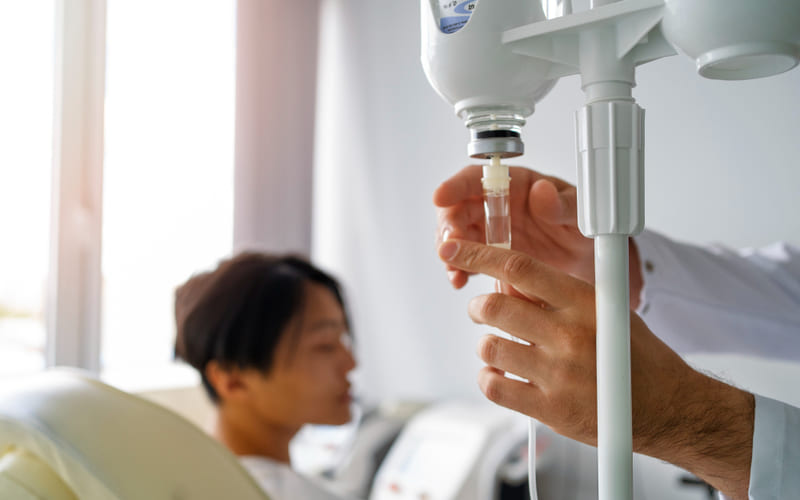Are You Fully Asleep With IV Sedation?

IV sedation, also known as intravenous sedation, is a common method used in medical and dental procedures to help patients relax and manage anxiety. It involves the administration of sedative drugs through an IV line, allowing for a controlled and precise level of sedation.
Understanding the effects of IV sedation and its benefits is crucial for patients considering or undergoing procedures that require this form of sedation. In this blog post, we will delve into the process of IV sedation, discuss the various levels of sedation, address common misconceptions, and provide insights on ensuring full sedation for a comfortable experience.
It is essential to have open and detailed discussions with healthcare providers regarding sedation options to ensure a successful and safe procedure.
How IV Sedation Works?
1. Selection of Sedative Drugs
Healthcare providers choose sedative drugs based on the patient’s medical history, procedure type, and individual needs, including benzodiazepines, propofol, and opioids.
2. Placement of IV Line
A healthcare professional inserts an IV line into a vein, typically in the patient’s arm or hand, to deliver sedative drugs directly into the bloodstream.
3. Monitoring Vital Signs
During the procedure, continuous monitoring of vital signs like blood pressure, heart rate, and oxygen levels ensures patient safety and helps healthcare providers adjust sedation levels if needed.
4. Administration of Sedatives
The IV line is used to slowly administer sedative medication, with the rate and dosage varying based on the patient’s weight, age, and desired sedation level.
5. Relaxation and Drowsiness
Sedatives induce deep relaxation and drowsiness in patients, reducing anxiety and discomfort associated with the procedure.
6. Pain Management:
IV sedation involves administering analgesics to manage pain and discomfort during the procedure, ensuring a more comfortable experience for the patient.
7. Consciousness and Responsiveness
IV sedation doesn’t cause complete unconsciousness like general anesthesia, but patients remain conscious and responsive during procedures, potentially experiencing limited memory due to sedative drug amnesia.
8. Continuous Monitoring
The healthcare team will monitor the patient’s vital signs, sedation level, and overall well-being during the procedure, making necessary adjustments for comfort and safety.
9. Recovery Period
After the procedure, patients are monitored in a recovery area until fully awake and safe to return home, requiring a responsible adult for transportation.
10. Post-procedure Care
Patients are given detailed instructions on post-procedure care, including any necessary restrictions, medications, or follow-up appointments, which are crucial for a successful recovery.
Understanding the step-by-step process of IV sedation is crucial for patients, and consulting a healthcare provider is essential to discuss concerns, risks, and benefits specific to the individual’s case.
Levels Of Sedation
1. Minimal Sedation
The patient is awake but relaxed, with minimal effect on cognitive function and coordination. Vital signs remain unaffected.
2. Moderate Sedation (Conscious Sedation)
The patient has a reduced consciousness and can respond purposefully to verbal commands. Breathing and cardiovascular functions are typically maintained.
3. Deep Sedation
The patient is in a state of depressed consciousness, with the ability to respond to painful stimuli. Breathing may be impaired, requiring assistance.
4. General Anesthesia
The patient is unconscious and unresponsive. Breathing and cardiovascular functions require full support. This level is typically reserved for complex surgical procedures.
Understanding the different levels of sedation helps healthcare providers tailor the sedation plan to meet each patient’s specific needs and comfort level during medical or dental procedures.
Common Misconceptions:
1. Complete Unconsciousness
Misconceptions suggest patients are asleep during the procedure, but most remain conscious and responsive, albeit deeply relaxed.
2. Lack of Control
Some patients fear losing control over their bodies or actions during IV sedation, but they can still follow instructions and cooperate with healthcare providers.
3. Memory Loss
Many people believe IV sedation causes no memory loss, but not all patients experience complete memory loss.
4. Prolonged Recovery
The misconception is that IV sedation recovery is lengthy and difficult, but in reality, most patients recover quickly, feeling alert and back to normal within a few hours.
5. Risks and Safety Concerns
IV sedation is a safe and commonly used technique, mainly when administered by trained healthcare professionals in a controlled setting, despite concerns about its safety.
Open communication with healthcare providers is crucial in clarifying misconceptions about IV sedation, ensuring patients make informed decisions and alleviate unnecessary fears, and ensuring a comfortable and successful experience.
The Truth About Being “Fully Asleep” After IV Sedation
The term “fully asleep” refers to deep relaxation where patients experience reduced awareness and minimal discomfort. While not equivalent to natural sleep, the sedative effects create a serene environment, allowing medical professionals to perform precise procedures and patients to undergo treatments more comfortably.
Is IV Sedation Right for Everyone?
While IV sedation is generally safe, not everyone is an ideal candidate. Factors such as medical history, current health conditions, and medications being taken must be considered. A thorough pre-procedure evaluation by the healthcare team helps determine the suitability for individual patients.
Understanding IV sedation is crucial for patients undergoing medical or dental procedures. It involves discussing different levels, addressing misconceptions, and ensuring full sedation. Open discussions with healthcare providers help create a tailored plan. Choosing the right level of sedation is crucial for a comfortable procedure. Engaging in decision-making ensures confidence and peace of mind.
